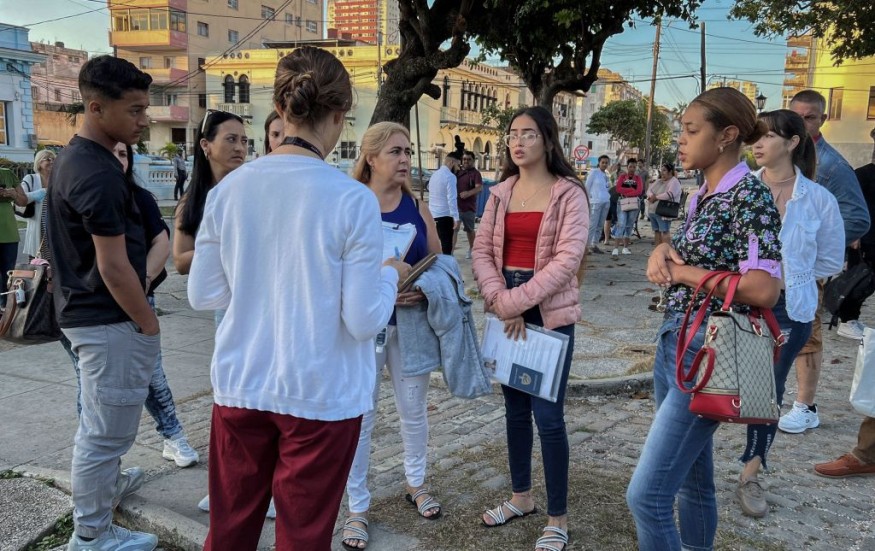U.S. Resumes All Visa Services at Cuba Embassy Amid Record Wave of Cuban Migration

Struggling with the largest influx of migrants from Cuba in decades, the United States resumed all visa services at its embassy in Havana on Wednesday.
Hundreds of thousands of Cubans are trying to escape the island to join their family in the United States amid the country's flailing economy and political crisis.
But since they cannot secure visas in Cuba, they fly to Central America and then make the long, arduous journey north on foot or sail the Florida Straits in rickety boats.
Hundreds of people lined up outside the U.S. embassy in Havana on Wednesday to get visas or to wait for their loved ones.
Applicant Ariel Arzuaga, 59, a technician once expelled from Panama, one of the Central American jumping-off areas to U.S.-bound migrants, told Associated Press that he believes this could help lessen illegal immigration and people can now go to the U.S. "in a safer way."
Visa services resumed Wednesday for the first time since a virtual suspension in 2017 due to health problems among staff that reduced the American presence in Havana.
Last May, the U.S. embassy slowly ramped up its diplomatic staff and the services they provided. Reports said the U.S. States could now issue at least 20,000 visas annually.
Last Friday, the U.S. embassy said: "The United States is working to ensure safe, legal, and orderly migration."
Cuban Migrants Are the Second-Largest Nationality at the Border After Mexicans
Last November, U.S. border patrol agents made 34,675 arrests of Cuban nationals, an increase of 21% over the 28,848 arrests made in October.
According to NPR, that figure has been steadily climbing monthly. Statistics from the U.S. Customs and Border Protection show that, after Mexicans, Cubans are the second largest nationality appearing at the border.
The economic, energy, and political challenges, as well as discontent among Cubans, are all contributing factors to the migration.
Although most Cubans who leave the island for the U.S. take flights to Nicaragua and enter the country legally through the Mexico border, many have also braved the perilous journey across the ocean.
Many migrants make the perilous journey across the Gulf of Mexico to the Florida shore in boats that can barely float.
Restrictions on Travels From United States to Cuba Remains
Embassy staff reported a series of health incidents, dubbed the Havana Syndrome, in 2017, and U.S. intelligence specialists initially believe it may be related to sonic attacks, Al Jazeera reported.
There had been an easing of relations between the two countries under Barack Obama's presidency, but this closure and Donald Trump's strengthening of U.S. sanctions against Cuba reopened old wounds.
Some limitations, such as remittances and family visits from Miami to Cuba, have been eased by the U.S. government under President Joe Biden.
Many Cubans had hoped that Biden would revive the island's "Obama era," but his administration has so far fallen short.
Many commodities cannot be imported or exported from or to Cuba, and there are still restrictions on American tourists visiting the island.
The United States has continued to include Cuba on its list of "sponsors of terrorism," It has also included Cuba on its list of nations suppressing religious liberty.
Biden and other top officials in the U.S. condemned the Cuban government's repression of anti-government rallies in 2021, leading to further sanctions and travel bans against Cuban officials.
READ MORE : Joe Biden Will Finally Visit the US-Mexico Border for the First Time Since Becoming POTUS: Here's When
This article is owned by Latin Post.
Written by: Bert Hoover
Watch: U.S. Embassy in Cuba Resumes Consular Services - From Reuters
Subscribe to Latin Post!
Sign up for our free newsletter for the Latest coverage!
© 2026 Latin Post. All rights reserved. Do not reproduce without permission.














